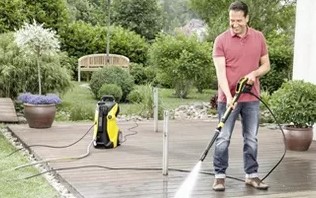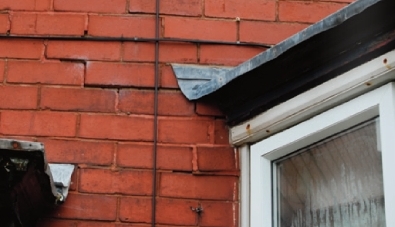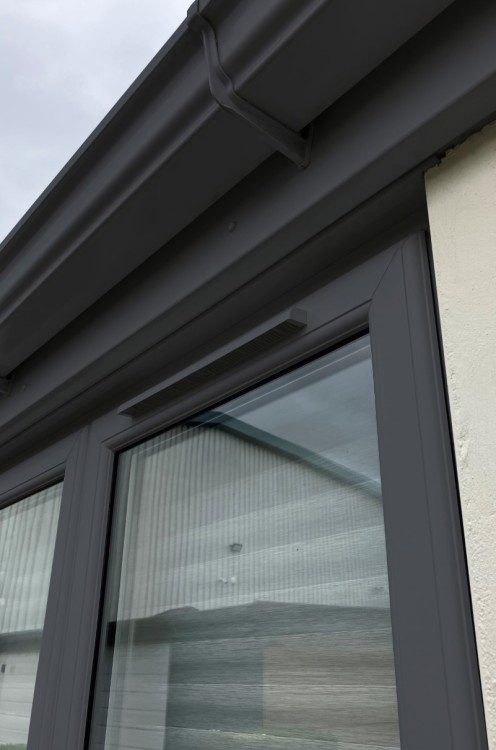Under Pressure – Patios Wrecked By Heavy-Handed Cleaning

Almost two-fifths (38%) of homeowners have experienced damage to their outdoor space due to improper pressure washing methods – here’s your chance to advise them how to do it properly.
While neglecting outdoor maintenance can lead to irreversible damage, rushing into cleaning without a planned approach can be just as harmful.
In the past 30 days alone, there have been over 64,000 online searches for the term ‘pressure washing’, indicating a surge in popularity for this cleaning method. But the experts at The Patio Black Spot Removal Company are urging caution.
Alex Essex, managing director, wanted to highlight the hidden dangers of pressure washing and offer advice on how to effectively clean stone surfaces.
Top 5 risks to your patio from pressure washing
Erosion and etching: Pressure washers release water at very high velocities, often exceeding 3,000 PSI – which is up to 75 times greater than the pressure from a household tap. Often these washers are petrol or diesel powered which can be extremely aggressive on natural stone. Customers should be cautious of professionals using pressure washers that release water over 1800 PSI. If these washers are used, there is a risk that the top layer of the sandstone can be stripped eroding the surface. It can also leave etch marks, which are permanent scars that dull the appearance and texture of the patio.
Chipping and cracking: Many patio materials, such as sandstone, can become brittle over time. This is because the material is sedimentary, therefore, it has built in layers and the vibration of the pressure washing can break down the surface, potentially removing layers, which can lead to water being forced into cracks or flaws in the material. The sudden impact or moisture intrusion can cause small chips to break off or exacerbate existing cracks, especially along edges or joints, eventually leading to structural damage.
Discoloration: Uneven pressure or incorrect nozzle usage can strip natural colour variations or stain finishes from natural stone. Additionally, the force of pressure washing can remove the top layer of the material where the finish is concentrated, leading to blotchy, faded or mismatched spots.
Dislodging: Patios often rely on compacted sand or loose joint material between stones to stay stable. High-pressure water can blast this joint material away, loosening pavers and creating uneven surfaces. This dislodgement can lead to trip hazards, weed growth and long-term stability issues if not promptly addressed and refilled.
Sealant protection: Many patios are sealed with a protective coating to guard against stains, moisture intrusion and UV damage. Pressure washing at high force can strip this sealant prematurely, leaving the surface exposed to the elements. Without the sealant, the patio becomes more vulnerable to water damage, fading and staining, ironically, the very things sealants are meant to prevent.
“Before undertaking any form of outdoor cleaning,” says Alex Essex. “it’s essential to understand the material you're working with. Different surfaces, whether sandstone, limestone, granite or marble, each have their own vulnerabilities and require specific approaches.
“What’s safe for one could be highly damaging to another. We often see well-intentioned homeowners inadvertently cause long-term harm simply by using the wrong pressure settings or equipment.
“A good rule of thumb is to always start with a gentle method, use the lowest pressure setting and test a discreet area before proceeding. The damage caused by a pressure washer that’s too powerful or used too closely can include everything from erosion and discoloration to cracking and natural layers removed. These aren’t just cosmetic issues, they can significantly reduce the lifespan of your patio.”
Picture with thanks to the Karcher press office: Homeowners can blast away at their patios or take a more considered approach – advice is on hand from The Patio Black Spot Removal Company and Karcher.
Article written by Cathryn Ellis
23rd July 2025


.jpg)

.jpg)




.gif)



.jpg)

.jpg)





.jpg)
